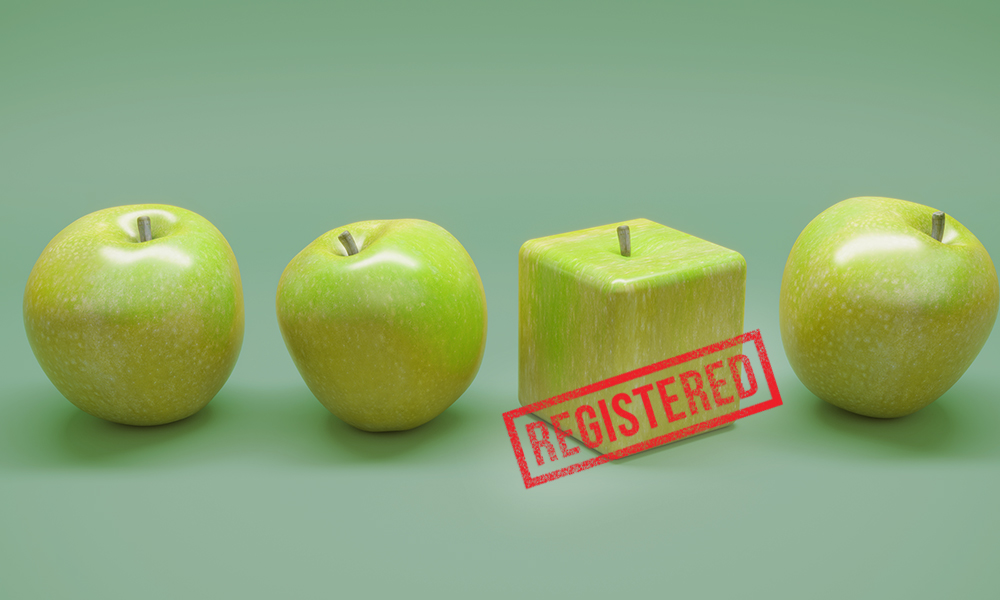Is your product different? Does it have a unique shape that sets it apart from competitors? If so, perhaps you want to think about protecting that particular shape as a trademark. It is an effective strategy for companies that want to stand out in a saturated market. Although the procedure to register a product’s shape as a trademark can be complex, it offers, in return, substantial advantages such as long-term protection or the creation of brand identity that is recognizable in the market. Why? Because protecting the shape of the product not only helps to strengthen brand identity, it also provides a single, long-lasting impression among consumers, differentiating those particular products from those of its competitors.
What is a shape mark?
Trademarks tend to be associated with a word, a sentence, a logo, or even a sound or smell. But they can also be a shape. So-called “shape” marks are a type of trademark that protects the unique shape or appearance of a product or its packaging, from the shape of a bottle to the shape of a lipstick case.
One way of differentiating a company’s goods from those of its competitors is to use a distinctive and recognizable product. A unique shape can help make a company’s products stand out and be a very effective way of providing information on the quality, style or origin of the products.
Protecting the shape of a product as a trademark gives its owner certain advantages. Once the shape of a product is registered as a trademark, its owner has the exclusive right to use that shape in relation to the products for which it has been registered. This means that other companies cannot use a similar shape that is likely to cause confusion among consumers.
Moreover, the shape of a distinctive and recognizable product can help to strengthen the recognition of the trademark. If consumers associate a unique shape with the trademark, it will be easier for them to remember it when they are making their purchasing decisions.
How can you protect the shape of a product as a trademark?
As far as EU trademarks are concerned (EUTM), the rules applicable to the registration of distinctive signs are the same for all marks, including shape trademarks. However, the examination procedure to secure protection of shape marks does have some particular features that are worth highlighting.
In respect of formal aspects, the representation of a shape trademark defines, per se, the object that is being registered. As a result, the representation of shape marks requires a graphic reproduction or a clear photographic reproduction of the shape.
In respect of substantive aspects, the shape must be distinctive, i.e. it must be capable of identifying the origin of the goods it covers. The European Union Intellectual Property Office (EUIPO) applies the following criteria when examining trademarks comprised exclusively of the shape of the goods they refer to:
- Firstly, a shape is not distinctive if it is a basic geometric shape – a square, rectangle, line, etc.
- The shape must also depart significantly from the shape that is expected by the consumer and also from the norm or customs in the sector. The more closely the shape resembles the shape that is most likely to be taken by the product in question, the greater the likelihood that it is not distinctive. In addition, it is not sufficient for the shape to be just a variant of a common shape in an area in which there is a huge diversity of shapes.
- Finally, the EU excludes from registration, signs that consist exclusively of the shape that results from the nature of the goods themselves (i.e. the realistic representation of a banana to cover bananas), the shape that is necessary to obtain a technical result (i.e., where all of the essential characteristics of the shape have a technical function), or a shape that gives substantial value to the goods.
The distinctive nature of shape marks
Despite the intricacies of registering shape trademarks, recent case law has held that even purely decorative shapes can be protected as trademarks if their distinctive nature is proven, be it inherent or acquired as a result of their effective use in the market.
A good example is the General Court judgement in case T-488/20. The luxury French brand Guerlain filed an application to register the shape of its Rouge G lipstick case at the EUIPO, which initially rejected the application on the grounds that it was purely decorative and did not serve to indicate the business origin of the product.
However, the General Court overturned the decision, noting that that although distinctiveness differs from novelty and originality, the relevant aspect for the purposes of a three-dimensional shape comprised of the shape of a product is that it should differ significantly from the usual customs and norms in the sector. The General Court reproduced in its judgment, several shapes that are indeed different from the one chosen by Guerlain:
Indeed, the attractiveness of the shape of a product can be taken into account, among other reasons, in order to demonstrate that it differs significantly from the usual customs and norms in the sector and therefore meets the threshold of distinctiveness to be registered as a trademark.
Successful cases
A classic example of a successful shape mark is the Coca-Cola bottle. The unique shape of the bottle is so distinctive that it has become a cultural icon and has even been displayed in museums and art galleries.
The shape of the Toblerone chocolate bar is also a well-known example. Its distinctive shape, with a series of triangular peaks has become the company’s symbol and consumers recognize it instantly.
Other shapes of products that have been successfully registered as EU trademarks are the bottle of Heineken beer, Nestlé’s Smarties chocolates, the Lego brick and the Volkswagen Beetle car. These shapes have been associated with a company or specific brand and have acquired a specific meaning in consumers’ minds.
Braulio Robles
Garrigues Intellectual Property Department






